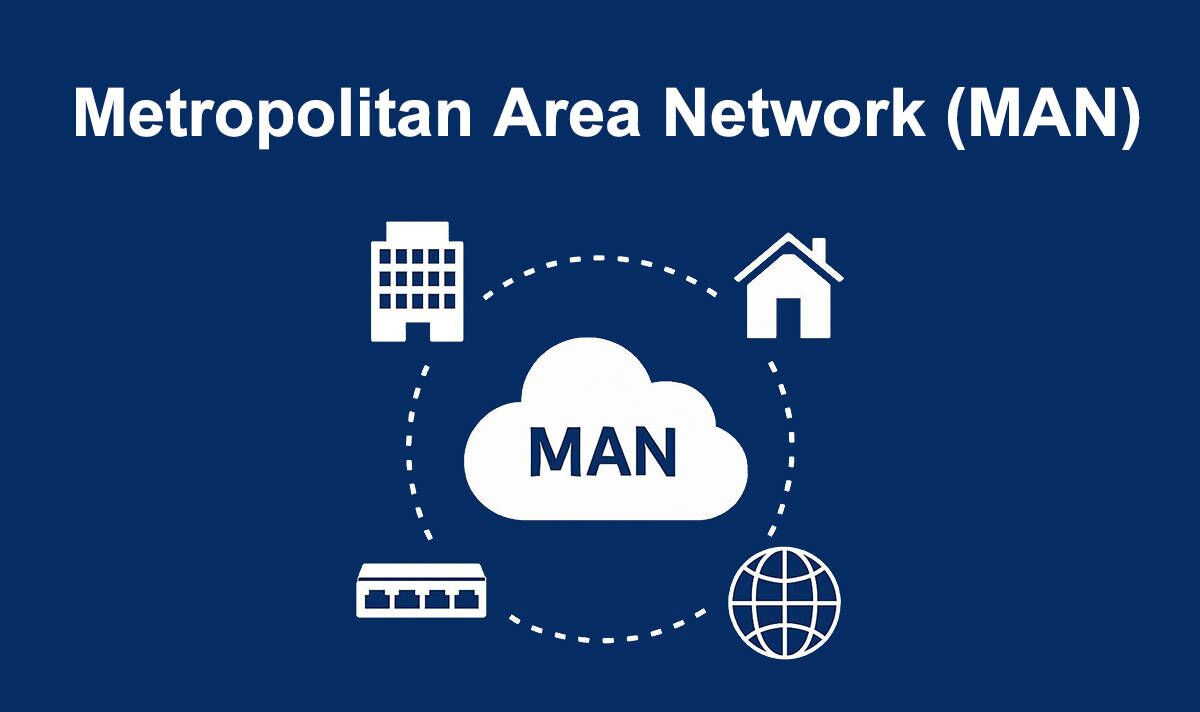
🏙️ What Is a Metropolitan Area Network (MAN)?
A Metropolitan Area Network (MAN) is a network infrastructure that connects multiple Local Area Networks (LANs) across a city or metropolitan region, providing high‐speed connectivity on the scale of several kilometers to tens of kilometers. It serves as an intermediate layer between LANs and Wide Area Networks (WANs).
By interlinking LANs in geographic proximity, MANs enable efficient data exchange and centralized services across institutions, campuses, or city districts.
🏙️ Why MAN Matters in Modern Infrastructure
MANs offer the performance and reliability needed for:
Interconnecting campuses or enterprise branches within the same city.
Delivering municipal or campus‑wide services, such as video surveillance, e‑government systems, or educational platforms.
Providing high‑speed backbone connectivity to support LAN resources and cloud access.
Acting as a resilient intermediate layer before integration into broader WAN environments.
🏙️ MAN vs. LAN vs. WAN
Feature | LAN | MAN | WAN |
|---|---|---|---|
Geographic Scope | Building or campus | City or metro region (several km up to ~50 km) | Regional, national or global |
Typical Bandwidth | 100 Mbps – 10 Gbps or higher | Hundreds of Mbps to multiple Gbps | Variable, often lower than MAN speeds |
Ownership/ Management | Private/organization | Often managed by government or telecom providers | Carriers or service providers |
Cost Level | Low to moderate | Moderate to high | High (infrastructure & leased lines) |
Primary Use Case | Local resource and device sharing | City-wide LAN interconnection and backbone support | Long-distance data syndication and global access |
MANs occupy the territory between LANs and WANs: larger than LANs but smaller than WANs, typically covering a metropolitan area.
🏙️ Technical Foundations of MAN
Common technologies and protocols include:
Metro Ethernet: Ethernet-based networking over fiber rings or star meshes, allowing seamless integration with Ethernet LANs.
SONET/SDH and Plesiochronous Digital Hierarchy (PDH): Traditional fiber backbone protocols used for high-speed MAN links.
MPLS (Multiprotocol Label Switching): Enables efficient routing, scalability, and service-level guarantees across MAN ring or mesh topologies.
Topologies usually include ring, hub‑and‑spoke, or mesh, with automatic rerouting capabilities to maintain resilience during link failures.
🏙️ LINK‑PP’s Role in MAN Deployments

PLATFORM‑grade metro network designs require stable, high‑integrity components. LINK‑PP supports MAN use cases by providing:
Ethernet magnetics modules and RJ45 MagJacks ideal for Metro Ethernet rings, edge routers, and CPE devices
Fiber‑compatible modules transceivers for MAN backbone switches and city‑wide links
Industry‑certified hardware that ensures signal integrity and compliance with IEEE and Carrier Ethernet standards
These LINK‑PP components are deployed in switches, edge devices, and installations across metro networks where reliability and throughput are critical.
🏙️ Final Thoughts: The Strategic Value of MAN
A Metropolitan Area Network bridges the gap between local scope and wide-area scale, delivering high-speed connectivity across urban regions. In sectors like enterprise networking, city infrastructure, and educational systems, MANs provide essential backbone services.
When building or upgrading a MAN, selecting Ethernet interfaces and transformer modules is vital to ensure decades of reliable operation. LINK‑PP's products deliver performance and compatibility trusted by global OEMs and system integrators.




